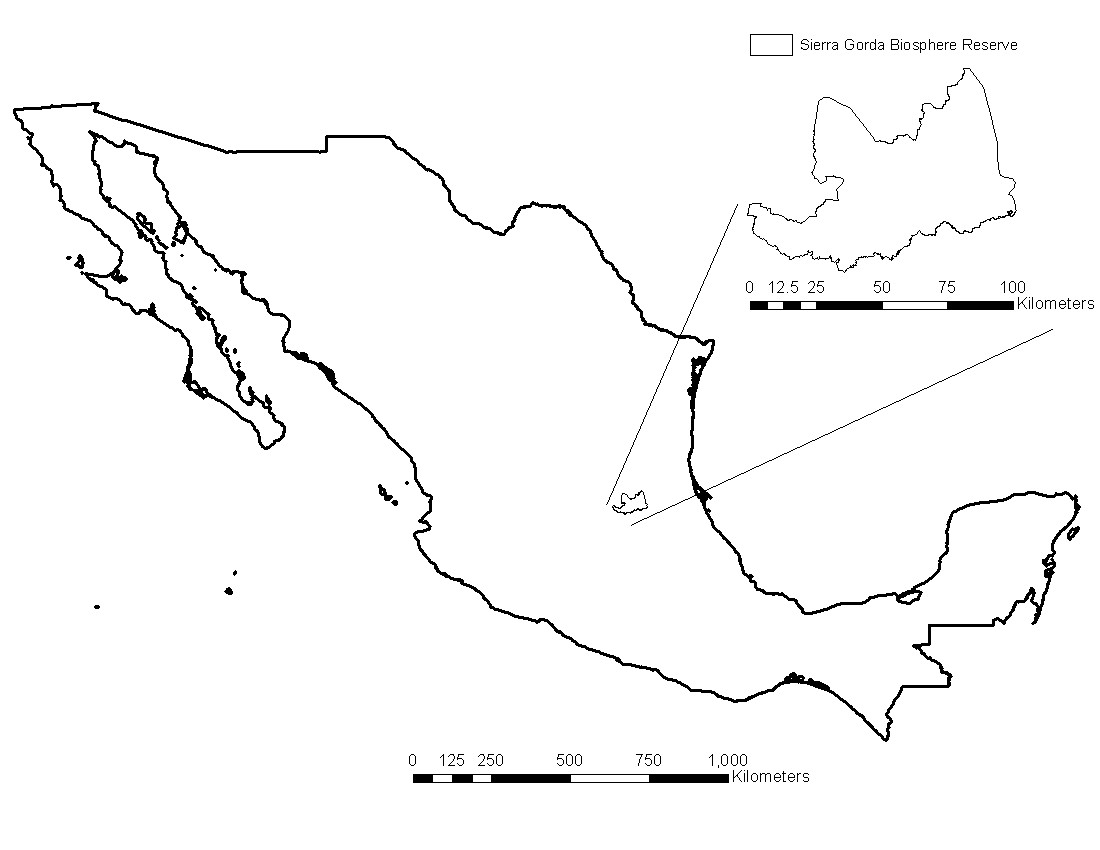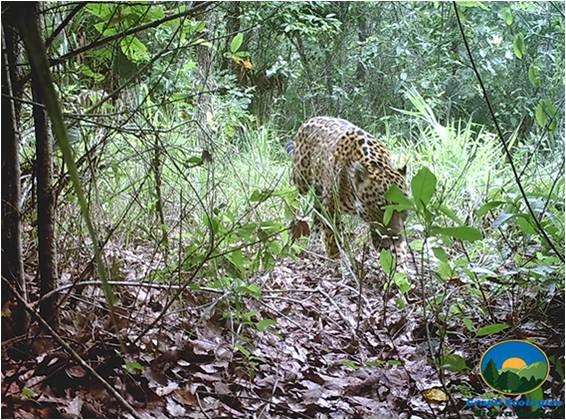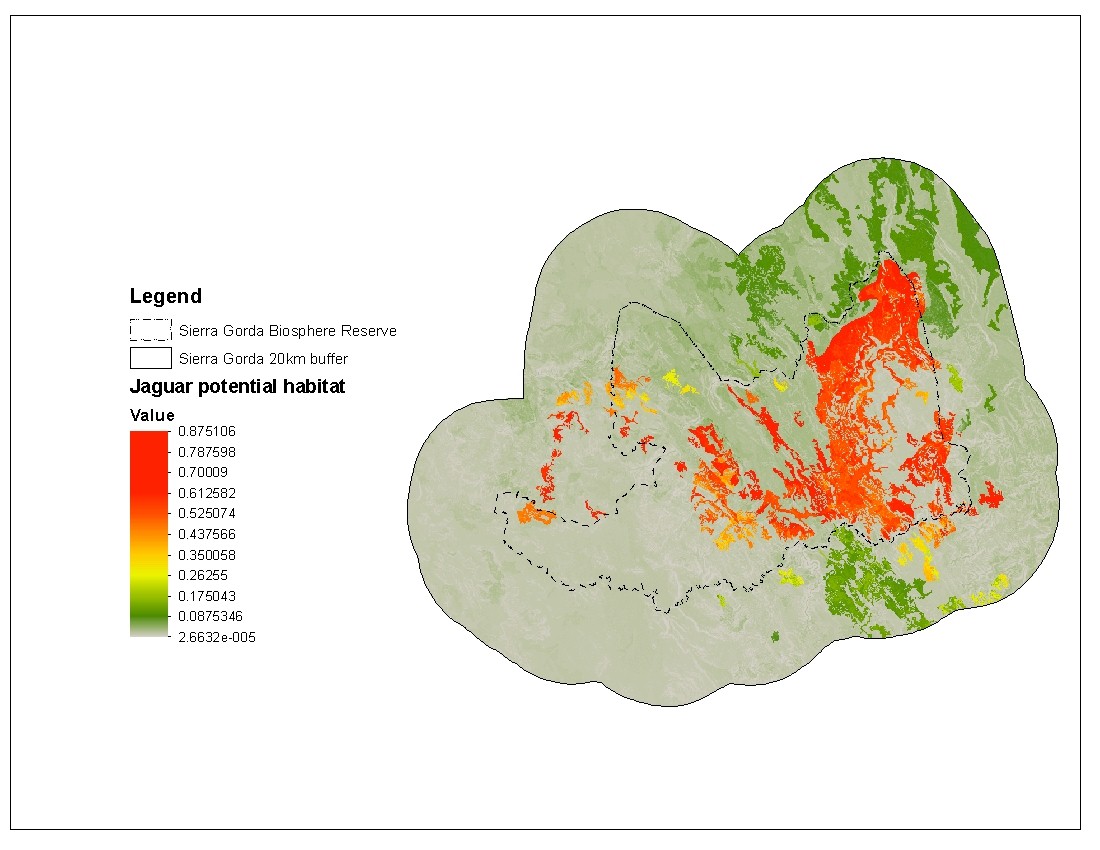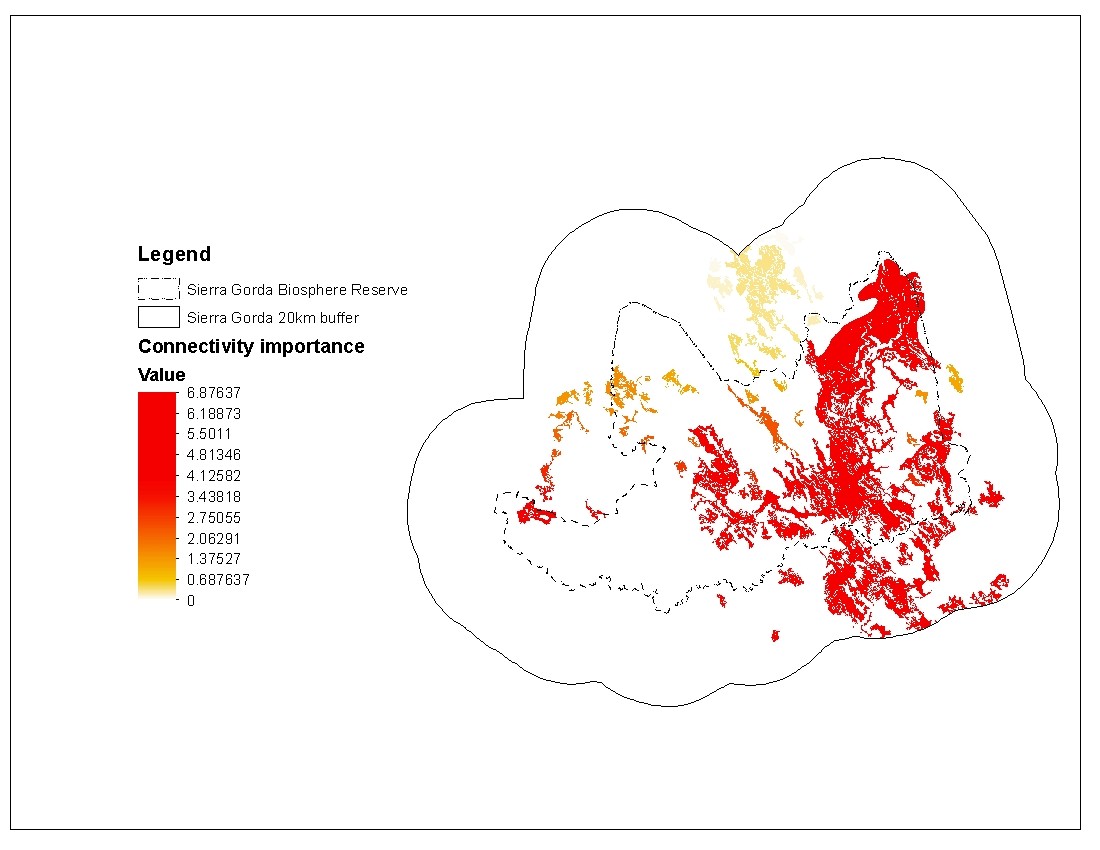Posted 01/7/16
Identifying potential habitat patches for jaguars is not enough to guarantee the persistence of populations throughout the Sierra Gorda Biosphere Reserve in central Mexico, therefore connectivity metrics are also vital to help in the prioritization of important zones. Carlos developed a potential habitat model for jaguars, based on jaguar presence data and environmental variables. His technique used also connectivity parameters to evaluate if incorporating habitat connectivity actually improves the jaguar habitat model for the reserve.

In central Mexico, there is a geographically and biologically unique space featuring a mosaic of a varied diversity of flora and fauna, the Sierra Gorda Biosphere Reserve. Yet similar to other reserves in the world, human and climate drivers are changing the unique conditions of this area at an accelerated rate (Figure 2). However, this reserve remains home to important protected and endangered species that are struggling to find optimal habitat conditions elsewhere, thus it is important to identify potential areas that are suitable for keep these animal populations.Jaguar (Panthera onca) is one of these endangered species, and essential in the faunal community because of its position as a top predator (Figure 2).

Furthermore, the presence of jaguars is an indicator of the health of the ecosystems and by conserving its habitat we can also protect other species. However, is very difficult to allocate efforts to large areas and therefore we need to identify and prioritize the most important zones capable to host jaguars.In the SILVIS lab, Carlos Ramirez Reyes, created a potential species distribution model for jaguars based on presence data and using factors than can affect their distribution such as topography, landcover and precipitation among others (Figure 3).

Based on this model, he identified areas inside within and outside the reserve that could host jaguars. Additionally, by adding connectivity parameters to the models (Figure 4), he evaluated if habitat connectivity actually improves the potential distribution model for the reserve. The goal was to find patches of potential habitat that are critical for connectivity of the entire reserve.

With his research Carlos hopes to gain better knowledge for the habitat requirements of the jaguar in the region. Ultimately, the project should serve to inform nongovernmental organizations and government agencies with interests in the reserve to make decisions on how to distribute resources for the management of the species and prioritize areas that should be protected. Furthermore, this project includes a new method for obtaining potential areas through the use of landscape connectivity. Similar projects that aim to model potential species distribution can benefit from this technique given that landscape connectivity is also important for animal dispersal and gene flow in fragmented landscapes. “
Story by Guzmán Colón, Diana
